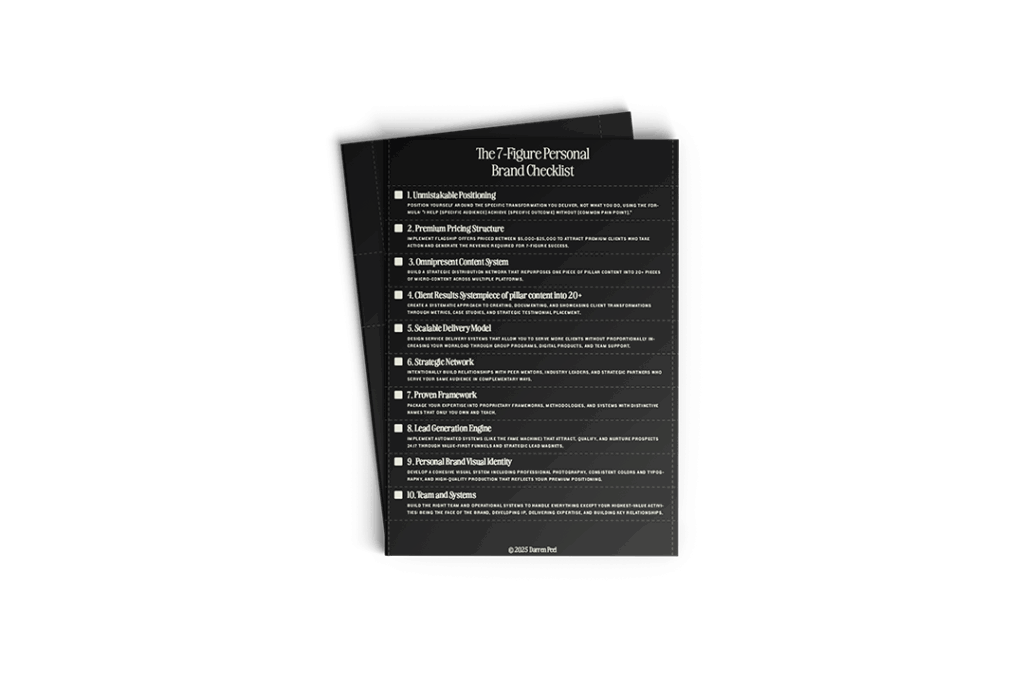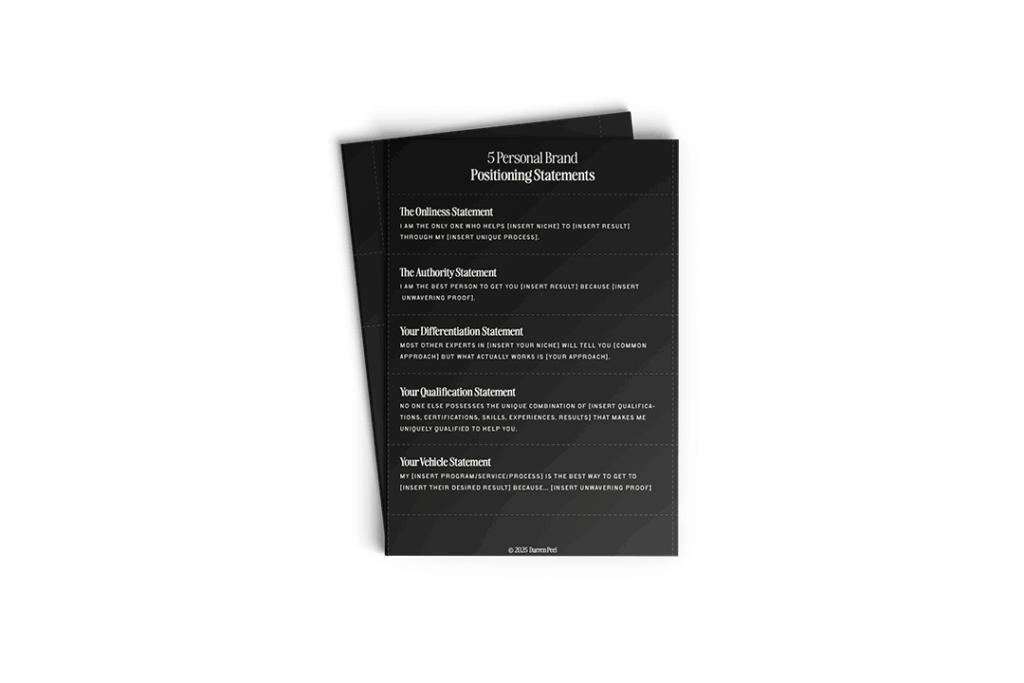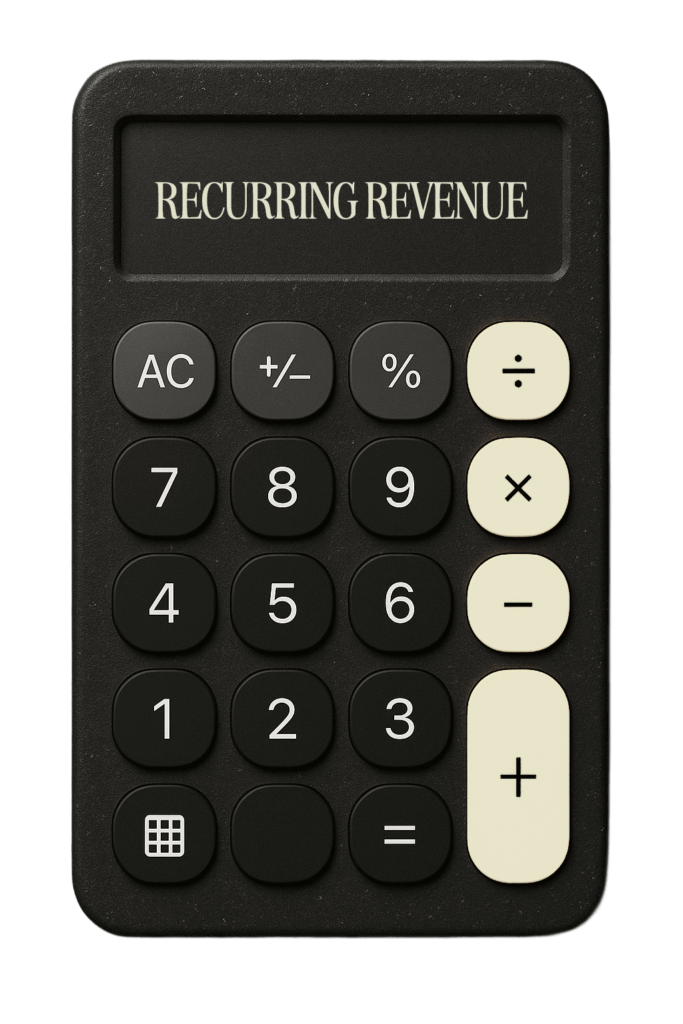If you think building a loyal audience is just about creating good content, then you’re missing the psychological triggers that separate seven-figure creators from those struggling to be heard. In fact, the human brain gets addicted to brands through specific psychological patterns that have nothing to do with authenticity.
Most creators focus entirely on content quality while wondering why their engagement remains flat. They follow advice about “being authentic” without understanding that audience addiction operates on deeper psychological principles. The biggest difference between winning and losing on social media isn’t content—it’s understanding how the human brain forms attachments and creates habits around personal brands.
These seven psychology hacks have been tested across hundreds of clients with undeniable results. By implementing strategic psychological triggers, you can transform casual viewers into raving fans who consume everything you create. This isn’t manipulation—it’s working with human psychology to create meaningful connections that drive real business results.
What Are Psychology Hacks for Personal Branding?
Psychology hacks for personal branding are scientifically-backed techniques that leverage how the human brain processes information, forms attachments, and makes decisions. These methods work with natural psychological tendencies to create stronger connections between creators and their audiences. Unlike surface-level engagement tactics, psychology hacks tap into deep-rooted human behaviors that drive long-term loyalty and action.
The most effective personal brands don’t just create content—they create psychological experiences that make audiences feel genuinely connected to the creator. This connection translates into higher engagement, increased trust, and ultimately, more conversions.
Why Psychology Matters for Personal Brand Growth
Research from behavioral psychology shows that humans make decisions based on emotion first, then justify with logic. When you understand the psychological triggers that influence these emotional decisions, you can ethically guide your audience toward deeper engagement with your brand.
Key Statistics:
- Brands using psychological triggers see 5-10x higher engagement rates
- 97% of top personal brands secretly use these psychological principles
- Audiences are 74% more likely to purchase from brands that trigger these psychological responses
The difference between mediocre and exceptional personal brands isn’t talent or luck—it’s understanding the psychological journey your content takes people on. Master psychology, and you master growth.
How Psychology Hacks Work
To illustrate these principles in action, let’s follow three health coaches competing for the same high-ticket client: Smart Samantha (the meticulous strategist), Gym Bro Chad (charismatic but inconsistent), and Newbie Dan (passionate but finding his footing).
Each coach receives points based on their implementation:
- 0 points: Bad implementation that pushes clients away
- 1 point: Decent implementation that gets the job done
- 2 points: Brilliant implementation that creates audience addiction
Step 1: Leverage the Mere Exposure Effect
What it is: The scientific principle that the more someone sees you, the more they like you.
Bad Example (Dan – 0 points): Posts randomly on Instagram when inspired, sometimes going silent for weeks. No consistent visual identity.
Decent Example (Chad – 1 point): Consistently posts workout videos five times per week with signature tank top, but only on Instagram.
Great Example (Samantha – 2 points): Develops consistent visual brand with signature colors and “Health Decoded” intro phrase across YouTube, Instagram, and podcast. Strategic content repurposing maintains presence on all platforms.
Step 2: Create Pattern Interrupts and Curiosity Gaps
What it is: Strategic disruption of expected patterns combined with information gaps that force attention.
Bad Example (Samantha – 0 points): “Hey guys, welcome back to my channel. Today I’m going to teach you about…”
Decent Example (Chad – 1 point): “The number one protein mistake costing you muscle gains is something 98% of gym-goers do daily.”
Great Example (Dan – 2 points): “I lost six pounds of muscle in 10 days following common fitness advice and discovered why everything you’ve been told about protein timing is scientifically backwards.”
Step 3: Stack Social Proof and Authority
What it is: Leveraging what others do and what authorities recommend to build trust shortcuts.
Bad Example (Dan – 0 points): “Lots of people have transformed their bodies with my programs” and “I am an expert in nutrition.”
Decent Example (Chad – 1 point): Shares before/after photos of client who lost 30 pounds in 90 days, mentions Men’s Health feature.
Great Example (Samantha – 2 points): “In a controlled test across 27 clients, my Metabolic Reset Protocol increased fat loss by an average of 43% compared to traditional methods, validated by Dr. Johnson at Stanford’s Human Performance Lab.”
Step 4: Apply the Liking Principle
What it is: Strategic vulnerability and similarity that creates genuine connection.
Bad Example (Chad – 0 points): Only shows perfect physique, talks about “natural genetics” and never struggling with weight.
Decent Example (Samantha – 1 point): Occasionally mentions being overweight but keeps it surface-level.
Great Example (Dan – 2 points): Shares detailed, vulnerable story about unhealthy relationship with food, specific mistakes made, and emotional toll. Connects vulnerability directly to expertise developed.
Step 5: Implement Reciprocity and Over-Delivery
What it is: Creating obligation through unexpected value that exceeds promises.
Bad Example (Chad – 0 points): Offers “Fat Loss Guide” but delivers one-page PDF with obvious advice.
Decent Example (Samantha – 1 point): Provides solid 15-page nutrition timing guide that matches promises.
Great Example (Dan – 2 points): Promises simple protein calculator but delivers unexpected video course, macro calculator, meal planning templates, and private community access.
Step 6: Create Exclusivity Effects
What it is: Leveraging human desire for status and scarcity to increase perceived value.
Bad Example (Chad – 0 points): Constantly posts “Only 5 spots left!” for digital program with unlimited capacity.
Decent Example (Samantha – 1 point): Creates private Facebook group without clear status differentiators.
Great Example (Dan – 2 points): Develops three-tiered community structure with public content, “Metabolic Mastery” group requiring challenge completion, and exclusive “Transformational Council” limited to 50 top performers.
Types of Psychology Hacks for Personal Brands
Attention-Based Hacks
- Pattern Interrupts: Breaking expected content patterns
- Curiosity Gaps: Creating information tension that demands resolution
- Mere Exposure Effect: Building familiarity through consistent presence
Trust-Building Hacks
- Social Proof: Demonstrating others’ positive experiences
- Authority Stacking: Connecting your expertise to recognized authorities
- Liking Principle: Creating similarity and relatability
Action-Driving Hacks
- Reciprocity: Creating obligation through unexpected value
- Exclusivity Effect: Leveraging status and scarcity desires
Best Practices for Psychology Hacks
Do’s:
- Be consistently visible across multiple platforms with recognizable branding
- Create specific, measurable social proof rather than vague testimonials
- Share strategic vulnerability that relates to your expertise area
- Over-deliver on promises to create powerful reciprocity imbalances
- Design clear status hierarchies in your community structure
Don’ts:
- Use false scarcity that erodes trust over time
- Show only perfection without relatable struggles
- Make vague authority claims without specific evidence
- Follow predictable patterns that blend into the content noise
- Under-deliver on promises which creates reciprocity deficits
Common Challenges and Solutions
Challenge 1: Maintaining Consistency Across Platforms
Solution: Develop a core visual identity and signature phrases that translate across all platforms. Create one piece of content and strategically adapt it for each platform’s native format.
Why it works: The mere exposure effect requires repeated visibility, and consistent branding accelerates recognition and trust-building.
Challenge 2: Creating Genuine Vulnerability Without Oversharing
Solution: Share challenges that directly relate to your expertise area and show how overcoming them led to your methodology. Focus on professional struggles rather than personal trauma.
Why it works: Strategic vulnerability creates similarity while positioning you as someone who has walked the path before your audience.
Challenge 3: Building Social Proof From Scratch
Solution: Start with small wins and document everything. Track specific metrics and transformations, even with free content or beta programs.
Why it works: Specific, measurable proof is more powerful than vague claims, and early documentation creates compounding credibility.
Tools and Resources
Essential Tools:
- Canva or Adobe Creative Suite: For consistent visual branding across platforms
- Loom: For creating unexpected video content to enhance written resources
- Circle or Discord: For building tiered community structures with clear status levels
- Calendly: For creating exclusive access to high-tier community members
Frequently Asked Questions
Q: Are psychology hacks manipulative? A: When used ethically, these techniques work with natural human psychology to create meaningful connections. The key is providing genuine value while implementing psychological principles, not deceiving people.
Q: How long does it take to see results from psychology hacks? A: Some effects like pattern interrupts work immediately, while others like the mere exposure effect require 30-60 days of consistent implementation to show significant results.
Q: Which psychology hack should I implement first? A: Start with the mere exposure effect by developing consistent branding across platforms, as this creates the foundation for all other psychological triggers to work effectively.
Q: Can these psychology hacks work for any industry? A: Yes, these principles are based on universal human psychology. The specific implementation may vary by industry, but the underlying triggers work across all markets.
Q: How do I measure the effectiveness of psychology hacks? A: Track engagement rates, comment quality, email open rates, and conversion metrics. Psychology hacks typically increase all of these metrics when implemented correctly.
Key Takeaways
Bottom Line: Psychology hacks transform casual viewers into psychologically committed audiences by working with natural human decision-making processes rather than against them.
- Mere exposure effect builds familiarity and trust through consistent, recognizable presence
- Pattern interrupts and curiosity gaps hijack attention in crowded content environments
- Social proof and authority stacking leverage decision-making shortcuts
- Strategic vulnerability creates genuine connection while establishing expertise
- Reciprocity and over-delivery create psychological obligation that drives action
- Exclusivity effects satisfy status desires and increase perceived value
Next Steps
Immediate Actions:
- Audit your current brand consistency across all platforms and identify visual/verbal elements to standardize
- Collect specific social proof with measurable results rather than vague testimonials
- Identify one vulnerable story related to your expertise that you can share strategically
Long-term Strategy:
- Develop a three-tiered community structure that provides clear advancement paths for your audience
- Create systematic over-delivery in your lead magnets and free content to trigger reciprocity
- Master pattern interrupts by studying successful examples in your industry and developing your unique approach
The gap between mediocre and exceptional personal brands isn’t talent or luck—it’s understanding the psychological journey your content takes people on. Master psychology, and you master growth.
Keywords: psychology hacks, personal brand psychology, audience engagement, personal brand strategy, content addiction, brand psychology, social media psychology, audience loyalty, psychological triggers, content strategy, brand building, online influence, viewer retention, engagement strategy, content creation psychology, mere exposure effect, social proof, authority building, reciprocity marketing, exclusivity marketing



